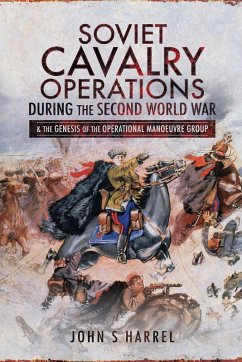The author of The Nisibis War analyzes the Red Army's usage of horse-mounted units along the Soviet-German Eastern Front during World War II. While the development of tanks had largely led to the replacement of cavalry in most armies by 1939, the Soviets retained a strong mounted arm. In the terrain and conditions of the Eastern Front, they were able to play an important role denied them elsewhere. John Harrel shows how the Soviets developed a doctrine of deep penetration, using cavalry formations to strike into the Axis rear, disrupting logistics and lines of communication, encircling and isolating units. Interestingly he also shows that this doctrine did not stem from the native cavalry tradition of the steppe but from the example of the American Civil War. The American approach was copied by the Russians in WWI and the Russian Civil War, refined by the Soviets in the early stages of World War Two, and perfected during the last two years of the war. The Soviet experience demonstrated that deep operations (cavalry raids) against enemy rear echelons set the conditions for victory. Although the last horse-mounted units disappeared in the 1950s, their influence led directly to the formation of the Operational Manoeuvre Groups that, ironically, faced U.S. forces in the Cold War. "An expansive analysis of the technical, tactical and operational employment of Soviet cavalry against the Germans and their Axis allies. For practitioners who want to understand the history and development, the book is a goldmine of overlooked campaigns and actions . . . . The book's dense and detailed presentation makes it valuable to operational planners and those interested in the Soviet-German war." -ARMOR Magazine
Dieser Download kann aus rechtlichen Gründen nur mit Rechnungsadresse in A, B, BG, CY, CZ, D, DK, EW, E, FIN, F, GR, HR, H, IRL, I, LT, L, LR, M, NL, PL, P, R, S, SLO, SK ausgeliefert werden.

